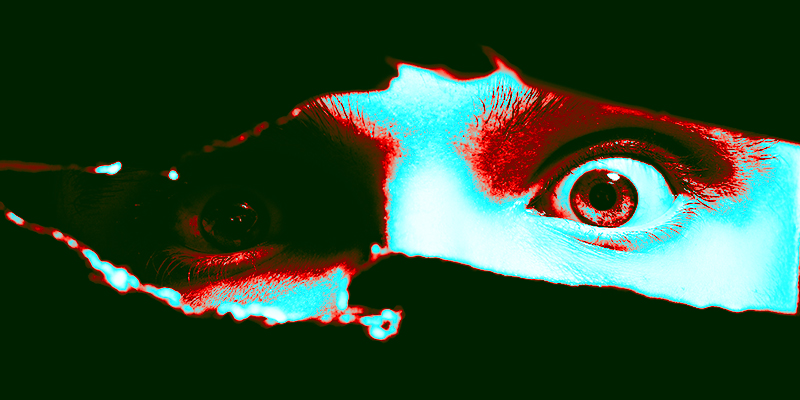Film criticism is always a delight to read—you get to learn as much about your favorite movies as you do about the Bristol Palin pregnancy conspiracy, but without the icky feeling you get after googling “Bristol Palin birther conspiracy”. Horror movie criticism distinguishes itself not only through its broader than average engagement with social criticism, but also by having the best titles in any critical genre, featuring such gems as Men, Women, and Chainsaws (best use of the Oxford comma) and Torture Porn in the Wake of 9/11 (which is about exactly what you’d think it’s about). Given horror cinema’s ongoing renaissance, and my own growing interest in this most intimate and metatextual of genres, it felt only fair to draw attention to some great works of criticism, from classics to new releases.
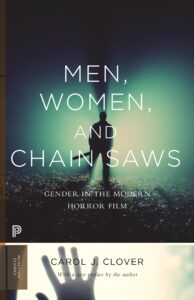
Carol J. Clover, Men, Women, and Chainsaws
(Princeton University Press)
It’s impossible to overestimate the importance of the book that gave us the term “final girls”. Carol J. Clover’s 1992 opus changed the way we think about slasher cinema forever, and centered questions of gender and violence in horror cinema that are still at the forefront of the conversation today.
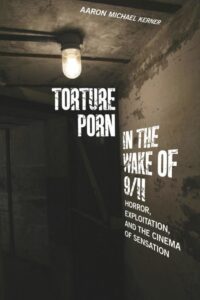
Aaron Michael Kramer, Torture Porn in the Wake of 9/11: Horror, Exploitation, and the Cinema of Sensation
(Rutgers University Press)
Just as influential as Men, Women, and Chainsaws, but without the hopeful message, Torture Porn in the Wake of 9/11 is, like its’ subject matter, not for the fainthearted. Many critics claimed in the early aughts that the televised violence of 9/11, and, more importantly, the publicized use of torture by the US military ushered in a new era of extremely violent exploitation cinema such as the Saw franchise and The Human Caterpillar (a film I will only ever read the plot summary of and never watch). Torture Porn in the Wake of 9/11 expands on this interpretation and additionally grounds the extremes of on-screen violence in a long history of American brutality.
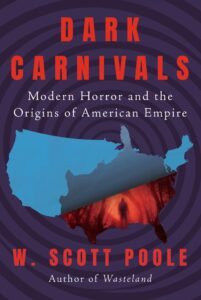
W. Scott Poole, Dark Carnivals: Modern Horror and the Origins of American Empire
(Counterpoint)
This book’s thesis is quite fascinating: W. Scott Poole writes of horror cinema, fiction, and culture as a path towards obliquely understanding an America that is an empire, and deliberately blind to this fact. He sets up two opposing narratives of horror: the Jaws story, where we are all happy in a 1950s America where threats come from the outside, attack us arbitrarily, then are defeated with order restored, and The Texas Chainsaw Massacre narrative, where the cannibals have made a mockery of American manifest destiny and the naïveté of the teenage victims is such they almost deserve their suffering.
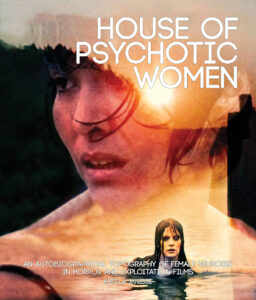
Kier-la Janisse, House of Psychotic Women: An Autobiographical Topography of Female Neurosis in Horror and Exploitation Films
(FAB Press)
I’ve always been of the mind that the best way to get to know someone is not through their experience so much as their taste, a little-explored topic in the wide world of recorded lives—until now.
In her brilliant and bizarre memoir, Kier-la Janisse reinvents film criticism as memoir, and tells the story of her life through the horror and exploitation films she enjoyed growing up and which later became her life’s passion. Anecdotal musings and harrowing life accounts mix together with astute criticism incorporating a quarter-century of thought on horror cinema; the chapter on films of teenage rebellion goes together with Janisse’s account of her baby delinquency, while Janisse’s relationship with her father, always fraught, leads into discussions of family, gender and sexuality as represented by exploitation cinema. Janisse isn’t making the case that these films are valuable works of art, so much as windows into the modern psyche, and occasionally (as in the case of rape and revenge cinema) a narrative form to be reclaimed by feminists despite its original prurient intent. House of Psychotic Women is what I hope all works of pop culture criticism to be in the future— erudite, personal, intense, mind-bending, and refusing to draw a line between literary merit and personal taste. Plus, the design is awesome!

Nina Nesseth, Nightmare Fuel: The Science of Horror Films
(Tor Nightfire)
Ever wondered why your favorite horror movies keep you up at night? Why some characters freeze instead of fight? What the science is behind a jump scare? You can learn all that and more in this highly accessible scientific take on how films activate our most basic fears—and why we keep coming back for more.
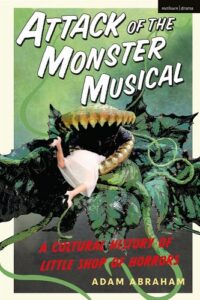
Adam Abraham, Attack of the Monster Musical: A Cultural History of Little Shop of Horrors
(Methuan Drama)
Just as entertaining as the title would suggest, Attack of the Monster Musical traces its subject matter from its B-movie origins, to off-Broadway cult hit, to the silver screen, and back to Broadway (Audrey 2’s come a long way, baby!). You can read an excerpt on the Roger Corman film that started it all here.

Clark Collis, You’ve Got Red on You: How Shaun of the Dead Was Brought to Life
(1984 Publishing)
What could be more fun than a history of Shaun of the Dead, or as I like to think of it, the film that reignited my love for Queen?!? Collis talks with everyone involved in the low-budget production that started the great age of zom-coms, for an engaging and lively read that’s sure to please the full spectrum of SotD fans.
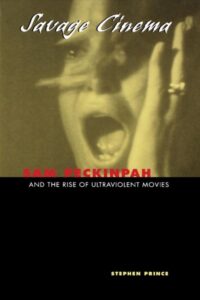
Stephen Prince, Savage Cinema: Sam Peckinpah and the Rise of Ultraviolent Movies
(University of Texas Press)
This book mostly belongs on the list because I once dropped my dad’s copy of it in a pool and he has never forgiven me for it, despite the fact that Peckinpah’s films are chock full of amoral children and young adults wantonly destroying property.

Robin R. Means Coleman, PhD, and Mark H. Harris, The Black Guy Dies First: Black Horror Cinema from Fodder to Oscar
(Saga, February 2023)
This pop culture history of Black representation in horror is at turns delightful, shocking, disturbing, hilarious, and always fascinating. Alternating between set pieces, analysis, and lists, the authors take us through the entire history of Black horror—from the era of comedic yet deeply offensive caricatures, to the pleasant surprise of Night of the Living Dead, through the Blaxpoitation era, the doldrums of the 80s, the 90s Black cinema renaissance, and finally, today’s current explosion of Black-directed and Black-written horror. (Also, never have I found a book that referenced Deep Blue Sea more, or indeed, at all. Which is a shame, as Deep Blue Sea is highly deserving of critical engagement. And that parrot!)

